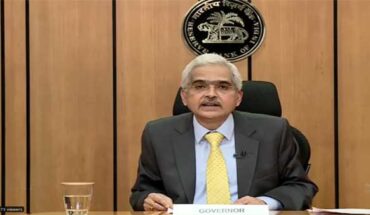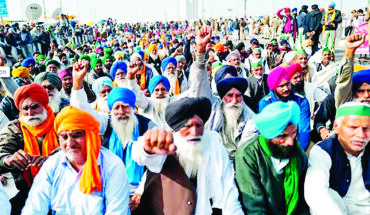
Recently, the State Governments of Rajasthan and Chhattisgarh have re-implemented the Old Pension Scheme (OPS) in their respective states. Subsequently, employees and political parties of other states of the country have started pressurizing the government to implement OPS in their states, as this scheme makes the life of employees easier after retirement and political parties may get lakhs of votes in every election. The basic reason for the abandonment of OPS by the Central or State Governments was the steady increase in the expenditure on pension head. In some states, due to increase in expenditure on pension head, their fiscal deficit has increased to a great extent.
The Old Age Social and Income Security (OASIS) report was introduced in the year 1999 in India to give concrete shape to financial reforms and financial good governance. In this report, it was clearly said that the central and state governments need to cut unnecessary expenses, so that a balance can be maintained between expenditure and earnings. It was said in this report that the facilities being provided free of cost should be banned on priority basis. Based on this report, in the budget speech of FY 2003, the then Finance Minister said that National Pension Scheme (NPS) would be implemented in place of OPS for central employees.
Under OPS, retired employees are given 50 per cent of their last drawn salary plus dearness allowance as monthly pension, while under NPS employees have to contribute 14 per cent of their salary every month, which is payable on attaining the age of retirement. After that, it is given to the employees in the form of pension. According to the NPS trustees, by December 2022, 59.78 lakh state government employees had opted for NPS, and its total assets were Rs 4.27 lakh crore.
The then government had announced the implementation of NPS in the budget of FY 2003, yet it was left to the choice of the states to adopt it or not. There was no coercion in the matter from the Central Government. Nevertheless, by the year 2005, 27 states had adopted NPS. However, Tamil Nadu and West Bengal have not implemented this scheme yet.
OPS was prevalent in most of the countries before the year 1990, but due to the increasing liabilities of the governments and the increase in the average age of the population, the government found it difficult to run the OPS for a long time. Hence, the economists started advising the government to Some other scheme should be implemented instead of this one, so that governments can remain financially disciplined.
The World Bank also believes that it is not possible to run OPS due to its high cost, as it will increase the liabilities of the Central and State Governments so much that they will have to borrow heavily from the market. India is a young country. When the age of the population here will increase, the liabilities of the government will increase enormously. According to an estimate, by the year 2050, the population of India will be 164 crores and out of these, the number of people above 60 years will be 32 crores. Due to the large number of elderly people, the government will have to spend a lot of money on OPS.
According to the Reserve Bank of India’s budget estimates for FY 2022-23, the pension expenditure of states will increase by 16 per cent to Rs 463,436 crore in FY 2022-23, as against Rs 399,813 crore in the previous year. The compound annual growth rate (CAGR) of states’ pension liabilities over the 12 years ending FY 2022 was 34 per cent, while state pension liabilities were 13.2 per cent of revenue receipts and 29.7 per cent of tax revenues.
Interest payments, salary and pension payments are considered as committed expenditure, as the expenditure on these items is fixed every month. Till the financial year 2021, on an average, 56 percent of the expenditure on these items was being done from the revenue of the states. The average revenue receipt of the states in this financial year was 100 per cent, but the expenditure was 125 per cent. In some states, such as Punjab’s expenditure was 80 per cent more than its income, while Kerala’s expenditure was 73.9 per cent more than its income, West Bengal’s expenditure was 73.7 per cent more than its income and Andhra Pradesh’s expenditure was 72.2 per cent more than its income. If we compare the expenditure as a percentage of tax revenue, then in these 4 states, the expenditure was more than 149 percent of their income.
In the year 2018, the CAG suggested that to remove the shortcomings in NPS, the government should ensure that employees who contribute to NPS get a minimum pension after retirement. Besides, the central government also made a rule in January 2019 that if the NPS investor gets delayed payment, then he will have to pay interest at the rate of GPF to the investors for the delayed time, so that more and more people adopt NPS scheme.
There is no doubt that by adopting the OPS system, the expenses of the states in the pension head will increase and the liabilities of the states will increase even more in case of retirement of the employees. At present, the average age of Indians is 70 years, which may increase further in the coming years.
Therefore, the liabilities of the state governments will increase further in the coming years. However, the higher or lower percentage of liabilities will depend on the income of the states, so the percentage of states borrowing from the market may also vary.
Due to the increase in the average age of the population in India and the high expenditure on OPS, even though the central and state governments want to get rid of it, but India’s social and economic structure is different from western countries. Here senior citizens are considered a burden to the family and society and usually their children do not treat them well. Many people are forced to live in old age homes, while aging makes a person physically weak, and he gets caught by many diseases. In such a situation, people need more money when they grow old.
From this point of view, there is a great need of OPS in a country like India. The constitution of the country also considers India as a welfare country. Therefore, it is the duty of the government to ensure the availability of better facilities for the elderly. Political parties are also doing politics of pressure for political reasons to implement OPS. Nevertheless, OPS is very important for government employees as it helps them to lead a healthy life after retirement.
It can therefore be said that by re-implementing OPS by the Central and State Governments, their expenditure will increase, but it can be continued by cutting the expenditure in other items, because it is necessary to do so to keep the society healthy.
Satish Singh, Mumbai Based Senior Columnist, views are personal





